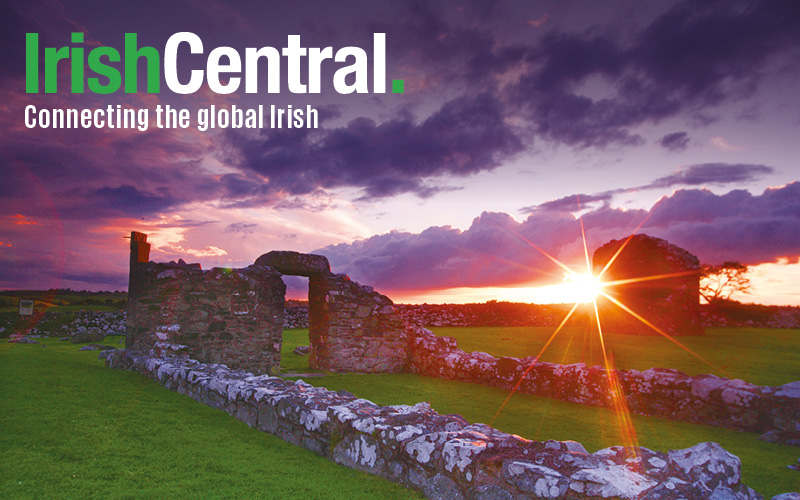Students and archeological experts from the University of Massachusetts, Lowell and Queen’s University, Belfast recently completed phase two of a four year archeological dig in the Massachusetts town, and expanded the project to include a site in Co. Tyrone, Northern Ireland.
The collaborative excavation, known as the Irish-American Heritage Archeological Program, focuses on the buried settlement of the first Irish immigrants in Lowell, located within the grounds of St. Patrick’s Church. The current church building is a reconstruction of the nineteenth century original, built atop the plot of the initial 1831 Irish settlement known as “The Acre.”
The first phase of the research study, led last year by archeological experts Dr. Colm Donnelly, Dr. Harry Welsh and Ronan McHugh of Queen’s University, Belfast, led to the recovery of 1350 artifacts from just two trenches in the churchyard.
With the help of six UMass Lowell students, the five-day excavation recovered rosary beads, clay tobacco pipes, shards of window glass, iron nails, and oyster shells. The artifacts were displayed in a joint exhibition at the UMass campus in 2010, organized by Dr. Frank Talty, Co-Director of UMass Lowell’s Center for Irish Partnerships. Talty told The Irish Emigrant, “These early Irish people established a community that survived discrimination and socio-economic limitations to become an integral part of Lowell’s development in the 19th century.”
Led by Co. Tyrone native Hugh Cummiskey, Irish settlers first arrived in Lowell in 1822 and initially called the settlement “New Dublin,” according to an 1831 news article in the Portsmouth Journal.
The immigrants were contracted to work on the expansion of canals that powered textile mills in the city. With work sites parallel to the Merrimack River, the labor was intensive and dangerous, and deaths from drownings and crushings were common. The early settlement consisted of about 100 cabins constructed from sods, mud and boards, each standing between seven and ten feet high. During and following the Famine, the town’s population increased as large numbers of Irish peasants immigrated to the area that would become modern-day Lowell, and the settlement grew to include schools, craftsmen and trading posts.
In the program’s second phase, the project expanded to include an archeological dig in Cossan, Co. Tyrone, Northern Ireland, where the teams worked on the site known to be Cummiskey’s former homestead before his departure for the United States. Boston marriage records dating to 1821 helped experts locate the emigrant’s former home.
Further archeological research will also take place at the church in Lowell, on a recently rediscovered burial ground and on an additional northern wall in the buried settlement. Dr. Donnelly notes “At [the] time you didn’t get ordinary people writing down their records; that was for the politicians. So, instead we try to let the artifacts speak for them.” All of the artifacts found at both sites will be analyzed extensively in the months to come.




Comments